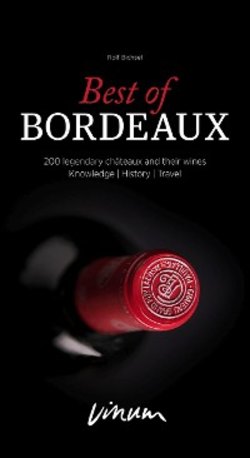Читать книгу Best of Bordeaux - Rolf Bichsel - Страница 34
Оглавление34
History 1855 classification
true. However, it is scarcely conceivable that Jefferson came up with his classifi-
cation by himself – he quite simply did not have the time, as he spent just three
days in Bordeaux. He arrived in the city from Toulouse/Agen/Langon on 24 May
and travelled on towards Blaye and La Rochelle on 28 May, probably never even
entering the Médoc.
He mentions that he crossed the Garonne near Langon, near Sauternes where
the Gironde's best white wines were produced, which automatically puts him in
southern Graves and means he must at least have passed through Preignac and
Barsac. He also wrote: ‘We find the plains entirely of sand and gravel, and they
continue so to Bordeaux. Where they are capable of any thing, they are in vines.'
He definitely also paid a personal visit to Haut-Brion: he writes that he examined
its sandy and stony soils, extremely different to the chalk soils of ‘Pontac' which
he also investigated. Haut-Brion had belonged to the de Fumels since 1749. It is
unclear which estate he means by ‘Pontac belonging to a M. Lamont': he could
perhaps be describing what is now Carmes Haut-Brion, sitting on a limestone
base next to the present-day Haut-Brion and originally belonging to the Pontacs,
who bequeathed it to the Carmelites. Je
ff
erson is not always as unfailingly pre-
cise or reliable as is sometimes claimed, and was simply writing a diary which
was only published after his death.
Nevertheless, in his travel journal he always clearly notes facts deduced
from his own experience or insight. This does not apply to the ‘classification',
suggesting that it was a generally accepted list: he most likely simply asked a
Bordeaux broker or merchant to dictate a list of the best and most expensive
wine, perhaps the broker Desgrands whom he cites as a source of information
at another point. Incidentally, Jefferson was not only interested in wine – he also
showed an interest in activities such as strawberry production near Agen, ice
manufacturing in northern Italy, to which he devoted several pages, and ox feed
production or the fact that oxen were virtually the only source of motive power
used in Bordeaux, which will be of interest to all of the estate owners now using
horse-drawn ploughs to cultivate their vine rows as part of the booming organic
movement.
The state-certi
fi
ed classi
fi
cation of 1855 came about after Bordeaux mer-
chants heard rumours that the Burgundians, who had gained direct access to
the Atlantic and Mediterranean following the opening of the Canal de Bour-
gogne (1832), were wanting to have their wines o
ffi
cially classified at the 1855
Paris Universal Exposition. The Bordelais simply decided to beat them to it. In
1855, Dijon-based doctor and researcher Lavalle did indeed publish a compre-
hensive work covering all wines in the Côte d'Or, which is still a treasure trove of
information about the region. There was never any mention of the state's bless-
ing. However this was also no longer relevant, as the initiative taken by the Bor-
deaux Chamber of Commerce and the city's wine brokers gained Bordeaux and
